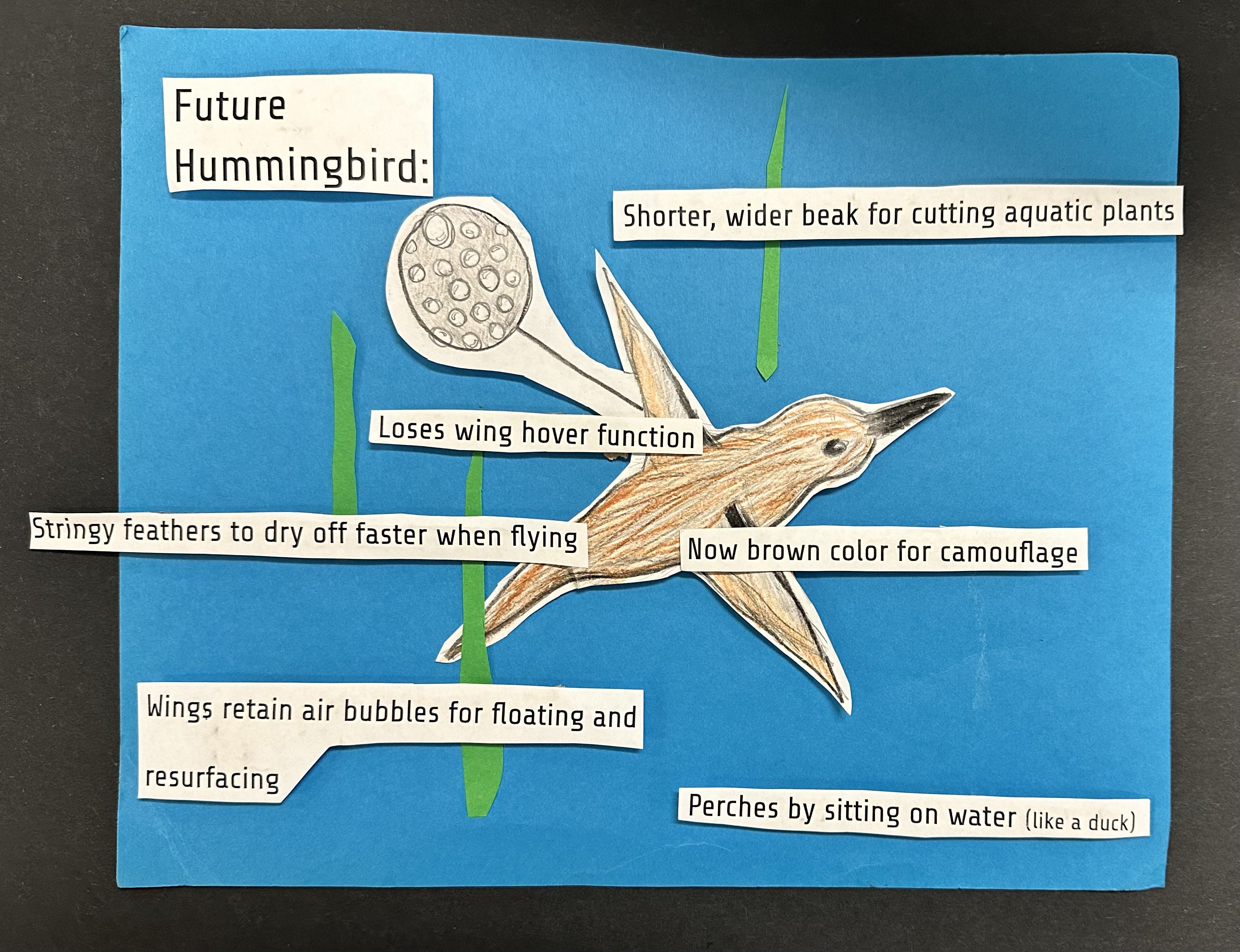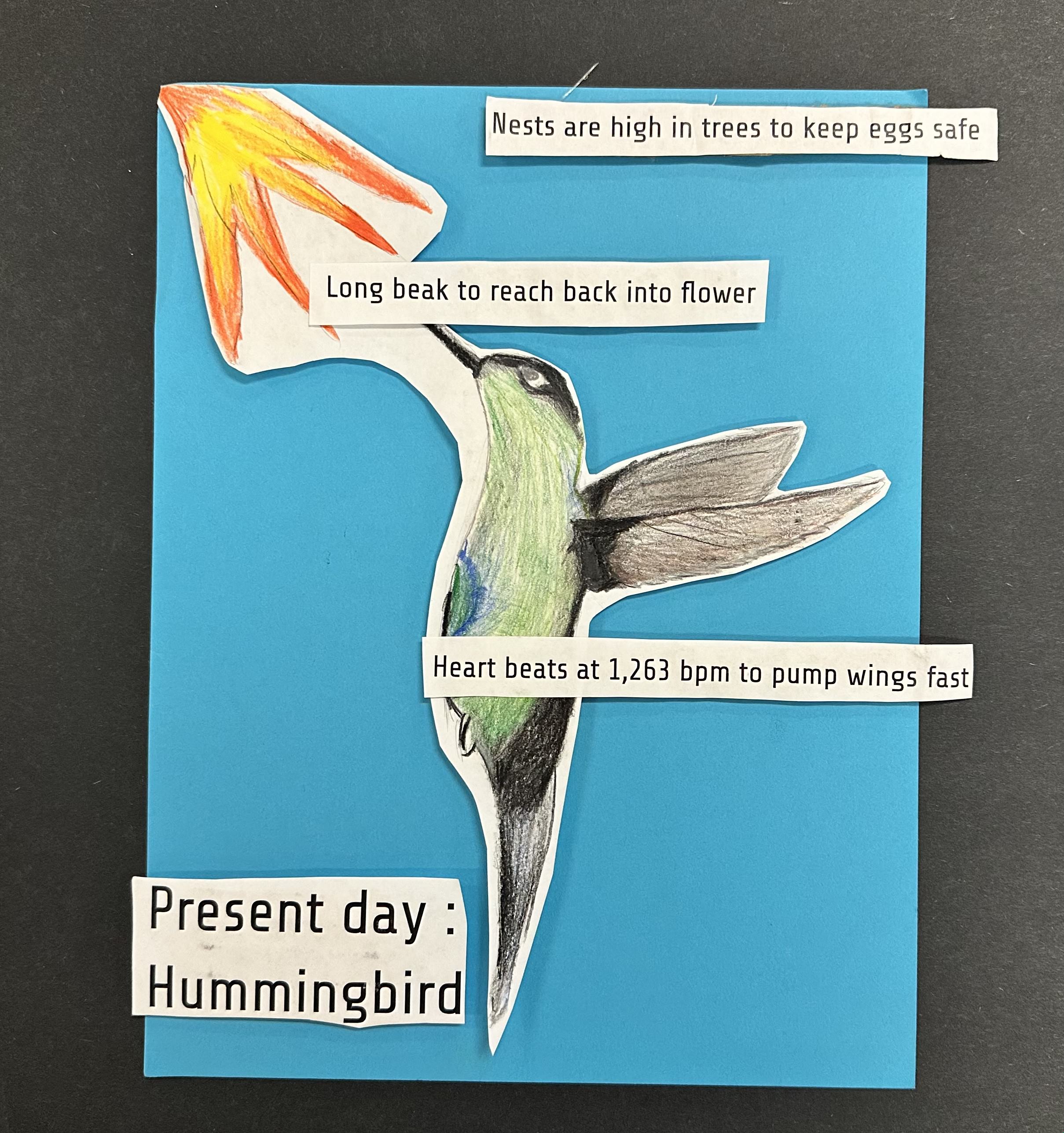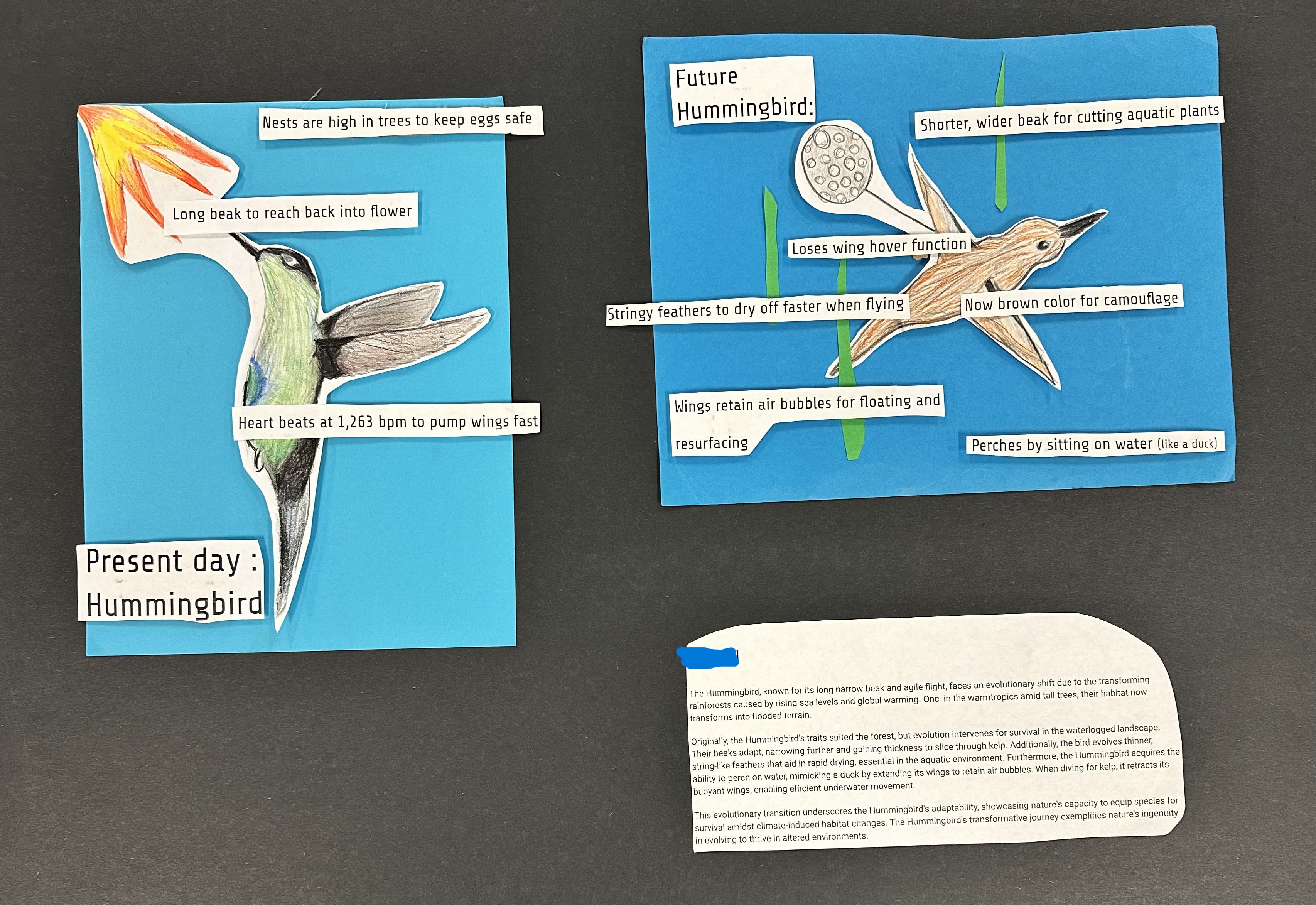The Hummingbird, known for its long narrow beak and agile flight, faces an evolutionary shift due to the transforming rainforests caused by rising sea levels and global warming. In the warm tropics amid tall trees, their habitat now transforms into flooded terrain.
Originally, the Hummingbird's traits suited the forest, but evolution intervenes for survival in the waterlogged landscape. Their beaks adapt, narrowing further and gaining thickness to slice through kelp. Additionally, the bird evolves thinner, string-like feathers that aid in rapid drying, essential in the aquatic environment. The Hummingbird acquires the ability to perch on water, mimicking a duck by extending its wings to retain air bubbles. When diving for kelp, it retracts its wings, enabling underwater movement.
This evolutionary transition underscores the Hummingbird's adaptability, showcasing nature's capacity enabling species for survival amidst climate-induced habitat changes. The Hummingbird's transformative journey exemplifies nature's ingenuity in evolving to thrive in altered environments.
Contact us
Thank you for your interest in contacting Future Engineers. We look forward to connecting with you!
General Inquiries
support@futureengineers.orgSponsorship Inquiries
sponsor@futureengineers.org


